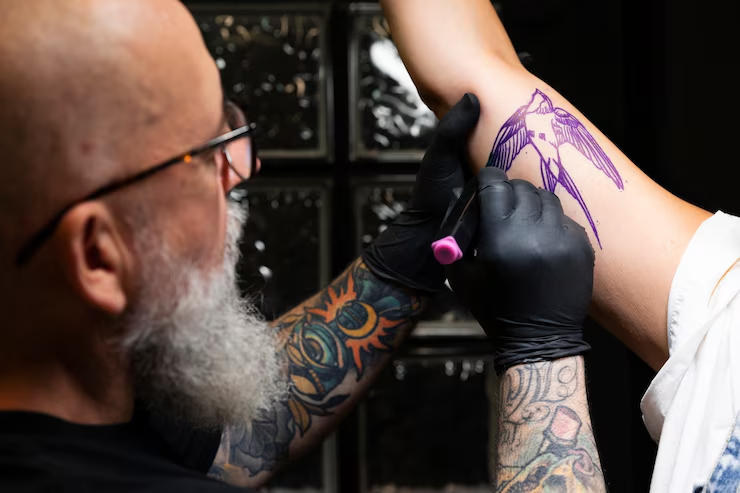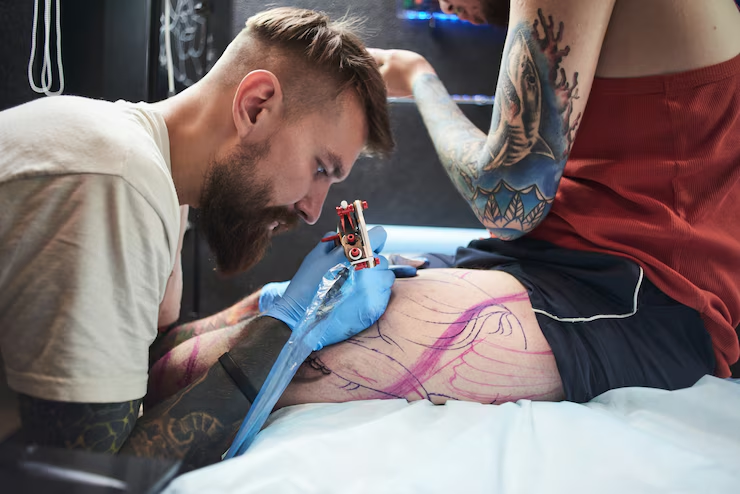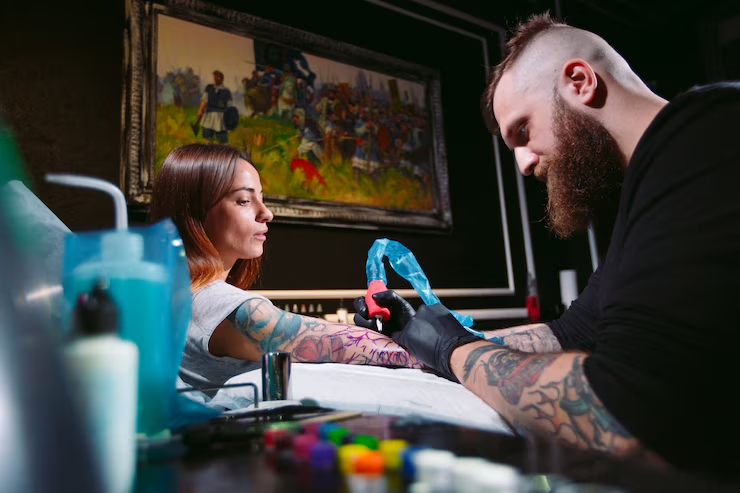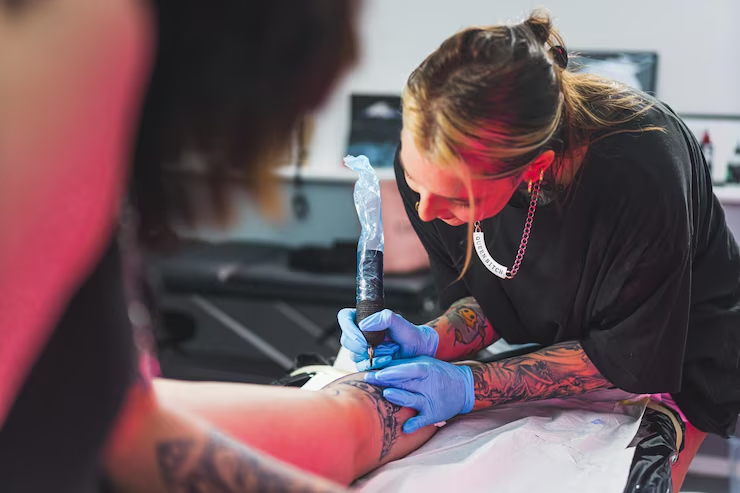The Cultural Significance of Tattoos: A Timeless Expression of Identity and Belonging
Introduction :
Tattoos have long transcended the boundaries of mere body decoration. Across history, geography, and civilization, tattoos have carried deep cultural, religious, and social meaning. While today tattoos are often seen as a form of personal expression or fashion, their cultural roots run far deeper.
From tribal rites in Polynesia to sacred religious symbols in India, tattoos have played a vital role in signifying identity, heritage, status, and even spiritual protection. Understanding the cultural significance of tattoos requires us to go beyond the surface, delving into how different societies use ink not just as adornment, but as a deeply embedded narrative device.
This blog takes an in-depth look at tattoos through the lens of culture and tradition. It explores their importance across various regions, their spiritual and social symbolism, and how ancient traditions have influenced modern tattoo culture.
________________________________________
A Global History of Tattooing
Tattooing is one of the oldest art forms known to humanity. Archaeological evidence suggests that tattooing was practiced over 5,000 years ago.
1. Ancient Egypt
Tattoos in ancient Egypt were often found on women and were believed to serve spiritual or medicinal purposes. They were also symbols of fertility, protection, and divine power. Dancers and priestesses often bore tattoos of deities or sacred animals.
2. Polynesian Tribes
Perhaps one of the most intricate and ritualistic forms of tattooing can be found in Polynesian culture. The word “tattoo” itself is derived from the Tahitian word “tatau”, meaning “to strike.” Tattoos in Polynesia were not only art but a rite of passage and status symbol. They told stories of a person’s ancestry, achievements, and rank in society.
3. Japanese Irezumi
In Japan, tattoos (Irezumi) have evolved over centuries. Initially associated with spirituality and protection, later, in the Edo period, elaborate full-body tattoos became symbols of rebellion and artistry. Despite historical stigmas connecting tattoos with the Yakuza, Japanese tattooing remains one of the most revered art forms globally.
4. Indigenous Cultures in the Americas
Native American tribes used tattoos as spiritual protection, marks of bravery, and tribal identity. Inuit women wore chin tattoos to signify coming of age, while warriors wore tattoos after great victories.
5. African Tribal Tattoos
In Africa, tattoos and scarification were deeply linked to initiation ceremonies, beauty, tribal affiliation, and spiritual beliefs. Body markings often signified transitions between life stages such as puberty, marriage, or motherhood.
________________________________________
Tattooing as a Cultural Identity
Throughout history, tattoos have functioned as cultural passports, revealing one’s heritage, status, and role in society.
1. Connection to Ancestors
Many indigenous groups believe tattoos connect them to their ancestors and spiritual world. For example, Polynesians view tattoos as a lineage-based tradition, passed down from generation to generation.
2. Rites of Passage
In cultures like the Maori of New Zealand, tattoos called Ta Moko are deeply sacred. They are etched onto the face and body to signify milestones such as adulthood, marriage, and leadership. Each line in the design holds meaning.
3. Mark of Status
In traditional Samoan society, a Pe’a (tattoo for men) or Malu (tattoo for women) was a sign of strength, courage, and service to the community. Completing the tattooing ceremony brought immense honor.
4. Symbols of Resistance
In the modern world, tattoos are sometimes used as forms of resistance or reclaiming identity. For example, during colonial times, tattooing was banned in some cultures, yet many people secretly kept the tradition alive.
________________________________________
Spiritual and Religious Meanings
Tattoos have long held spiritual significance in various religions:
1. Hinduism and Buddhism
In Southeast Asia, Sak Yant tattoos are sacred designs etched by monks using bamboo needles. These tattoos are believed to provide protection, luck, and spiritual power. Common designs include animals, deities, and geometric patterns.
2. Christianity
In ancient Coptic Christianity in Egypt, believers wore crosses tattooed on their wrists to signify faith and to identify themselves during persecution.
3. Pagan and Norse Symbols
The Vikings used runic tattoos and Norse symbols believed to have protective and mystical powers, such as the Vegvisir (a wayfinder symbol) or Yggdrasil (the tree of life).
4. Islamic Influence
While many interpretations of Islam discourage permanent tattoos, Henna tattoos (temporary) have deep roots in Middle Eastern and North African cultures, symbolizing beauty, luck, and spiritual blessings.
________________________________________
Tattooing in Contemporary Culture
As tattoos moved from sacred traditions into mainstream culture, their cultural role also evolved.
1. Tattoos as Self-Expression
Today, tattoos often represent personal stories, values, and beliefs. They may honor loved ones, memorialize events, or express identity and creativity. While deeply personal, these tattoos still echo the cultural heritage of ancient practices.
2. From Stigma to Acceptance
Until recently, tattoos were associated with rebellion, gangs, or criminality, especially in Western cultures. Today, they are embraced by professionals, celebrities, and even politicians.
3. Cultural Appreciation vs. Appropriation
It’s essential to recognize the difference between appreciation and appropriation. Getting a culturally significant tattoo without understanding its origin can be seen as disrespectful. Always research and consult artists who specialize in specific cultural designs if you're inspired by a tradition.
________________________________________
Examples of Culturally Significant Tattoos
1. Maori Ta Moko
Ta Moko uses bold lines and spirals on the face and body. These are not just decorative — each pattern represents family history, social rank, and personal achievements.
2. Filipino Batok Tattoos
Once nearly lost, batok tattooing has seen a revival in the Philippines, thanks to master tattooists like Whang-Od. These hand-tapped tattoos are symbols of bravery and identity.
3. Celtic Knots and Symbols
Celtic tattoos like the Triskelion, Triquetra, and Celtic Cross hold religious and cultural meaning, often related to eternity, balance, and faith.
4. Native American Totem Tattoos
Totem poles and animal symbols are commonly represented in Native American tattoos, honoring nature, spirituality, and tribal roots.
________________________________________
Tattoos in Pop Culture and Media
Modern media has played a huge role in popularizing tattoos. From TV shows like Ink Master to celebrities like David Beckham, Rihanna, Post Malone, and Angelina Jolie, tattoos are more accepted than ever.
However, with popularity comes the risk of losing cultural depth. When tribal or spiritual tattoos become fashion statements, they can be stripped of their context. This is why cultural respect and understanding are more important now than ever.
________________________________________
Women and Tattoo Culture
In many societies, tattooing was historically male-dominated. Today, women are leading the charge — both as artists and as clients. Female-centric tattoo studios are emerging, focusing on empowerment, healing, and body positivity.
Tattooing is increasingly seen by women as a form of reclaiming their bodies, celebrating femininity, and challenging societal norms.
________________________________________
Tattoo Revival Movements
Around the world, there's a growing movement to revive indigenous tattooing:
• In Canada, Indigenous communities are reclaiming facial and hand tattoos once banned under colonial laws.
• In Taiwan, the Atayal people are bringing back forehead tattoos to honor ancestors.
• In India, tribal women in regions like Madhya Pradesh continue to practice Godna — an ancient tattoo tradition.
These revivals are more than artistic trends — they are part of cultural healing and resistance against historical erasure.
________________________________________
Conclusion: The Tattoo as a Cultural Mirror
Tattoos are not merely body art — they are living history, cultural symbols, and personal manifestos. From the sands of Egypt to the islands of Polynesia, from ancient rituals to modern movements, tattoos reflect who we are, where we come from, and what we believe.
Understanding the cultural significance of tattoos is essential not just for tattoo lovers but for anyone interested in heritage and identity. As we continue to celebrate body ink in the modern era, may we also honor the roots and respect the traditions from which this timeless art form was born.











